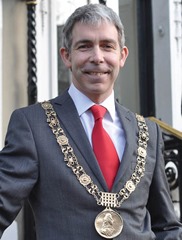Regional assembly
 Dublin City councillor Andrew Montague argues that the design of the new Eastern/Midland regional assembly is flawed and should be rethought.
Dublin City councillor Andrew Montague argues that the design of the new Eastern/Midland regional assembly is flawed and should be rethought.
The Minister for the Environment, Phil Hogan, has proposed that there should be three regional assemblies in Ireland: one in the south; one in the west and north; and an Eastern/Midlands Regional Assembly. These new assemblies will take on the important roles of deciding on regional, spatial and economic strategies for their regions; relevant functions in relation to EU funding programmes; oversight of local authority performance; and national policy implementation.
I welcome the development of regional assemblies because Ireland badly needs proper regional development plans drawn up by elected councillors. However, there are major flaws with the proposed regional assemblies, in particular the proposed Eastern/Midlands Regional Assembly.
Firstly, the Minister has grouped the wrong counties together to come up with this Eastern/Midlands Assembly design. The Minister is proposing that this assembly will be made up by each of the four Dublin councils and counties Louth, Meath, Westmeath, Longford, Offaly, Wicklow, Laois and Kildare.
It would make more sense to have a Dublin Regional Assembly made up of the four counties in Dublin, chaired by the directly-elected mayor of the Dublin region. The population of these four Dublin counties is 1.25 million people and they form a natural region that would have political buy-in. With a directly-elected mayor, it would make no sense to have a regional assembly that would go outside of the four Dublin counties.
Without a directly-elected mayor, there is a planning case to extend the regional assembly to include Wicklow, Kildare, Meath and Louth. However, it makes no sense to group the Dublin city region with the midlands. Longford, Laois, Westmeath and Offaly should be part of a separate region focused on a cluster of towns based on Athlone, Mullingar, Portlaoise and Tullamore. These midland counties could get overwhelmed in the proposed Eastern/Midlands Assembly as the focus of that assembly should be on Dublin and its hinterland.
The second major problem with the proposed Eastern/Midlands Assembly is that the twelve councils will each nominate two councillors to the assembly. This means that the 500,000 people living in Dublin City Council will have two representatives in the assembly, while the 50,000 residents of Longford will also have two representatives. What’s more, 22 councillors will represent the area outside of Dublin city, while just two councillors will be nominated to represent the city. In Irish politics, just like in the GAA, there is often a sense of Dublin being against the rest and that ‘Dublin gets too much’. In a regional assembly with just two representatives from Dublin city, this could lead to poor decision-making. Development plans could become very distorted with development being planned thinly over the 12 counties rather than being focused in Dublin city.
The number of councillors should be based on the size of the population that they represent. In fact, I believe the public representatives should be directly elected to this assembly rather than being nominated by their own local councils.
The work of regional assemblies is essential for proper development and good planning for Ireland. But let’s get the structures right for these important bodies from the start.
Andrew Montague is a councillor for Ballymun and former Lord Mayor of Dublin.





